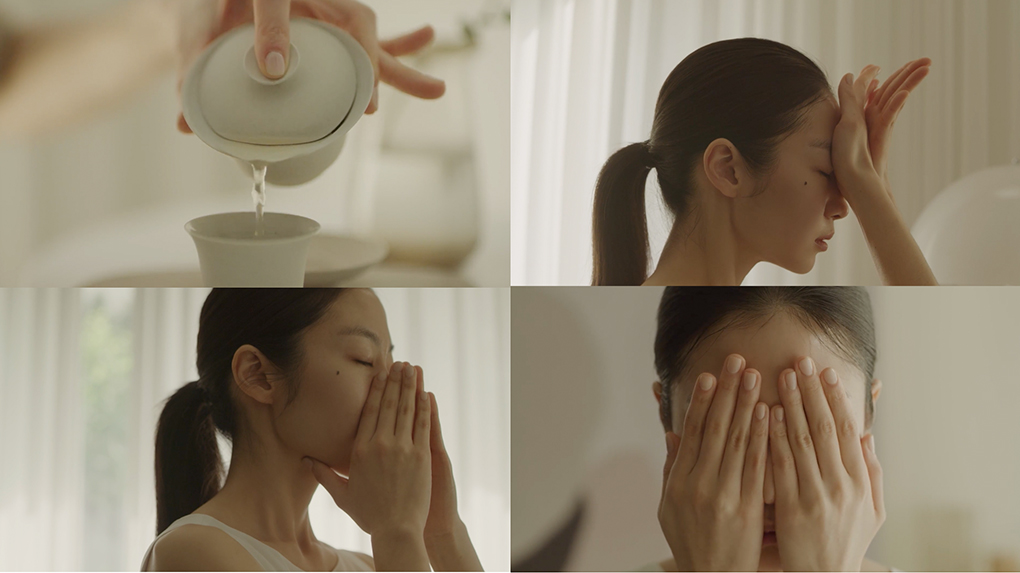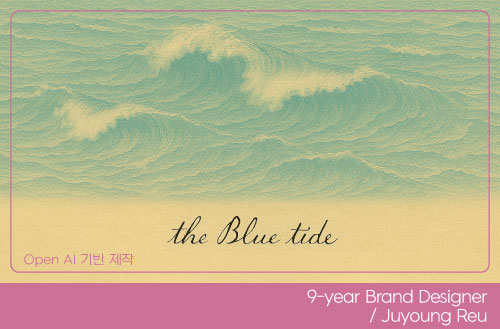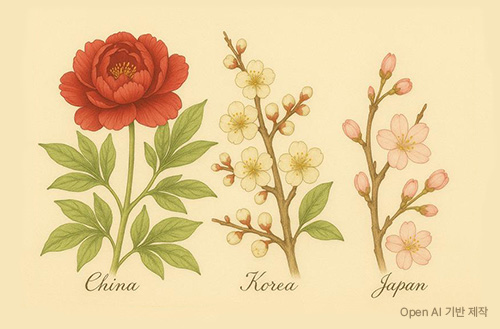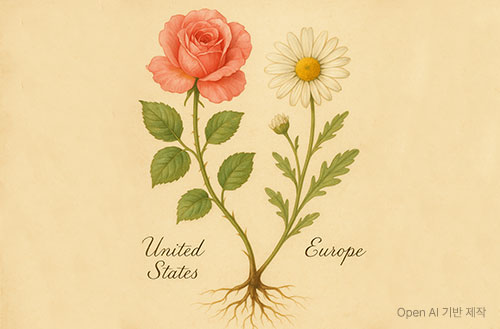
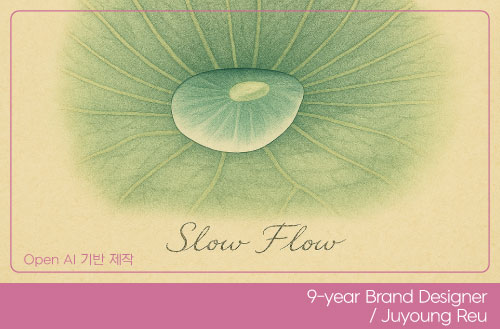

Columnist
Juyoung Reu LANEIGE BD Team
Editor's note
When the world moves too fast, beauty holds us still.
“Efficiency has moved the world, but beauty still moves people.”
We live faster than time allows. Phone notifications move before our thoughts do. We wrap up entire days with a single swipe, solve problems with AI’s ‘instant solutions,’ and measure everything—work, consumption, even relationships—by ‘immediacy.’
Everything responds instantly, every emotion rushes past in a moment. Yet while speed satisfies us, somewhere along the way, the density of emotion fades. Conversations that passed too quickly, forgotten scents, nameless echoes—they all grow fainter.
But beauty that seeps deep always arrives a little late. The dusky golden afternoon. The time it takes for flowers to bloom. The moment a fragrance spreads. The grain of evening light as it dims. These things have always approached slowly.
Heidegger called human life ‘dwelling’ (Dasein: a compound of ‘Da,’ meaning ‘there,’ and ‘Sein,’ meaning ‘being’), suggesting that to live is to master the art of staying. Only when we regard the world with an 'attitude of slowness' does the grain of things reveal itself, does the light of the mind come alive.
Slowness isn’t simply the opposite of speed. It’s the concentration of emotion, the depth of existence. The Holistic Beauty that K-Beauty has pursued addresses not the surface of skin but ‘the harmony of life as a whole,’ and at its root lies the ‘aesthetics of dwelling.’ Beauty, it seems, is simply another name for emotion that holds time within it.
This column began with a curiosity: in an age of speed, might brands that design the grain of rest be the ones that linger in people’s hearts?
1 Slowness as the New Luxury: Designing the Scarcity of Time
The Most Costly Outlay is Time.
- Antiphon the Sophist (411 B.C)
In the fifth century B.C., the Greek statesman and orator Antiphon (480–411 B.C.) said that time was the most costly expenditure.
Luxury was once defined by metals, jewels, and limited quantities. But the most precious thing in the world today seems to be leisure—the luxury of time. Speed brings convenience and generates efficiency, but slowness creates scarcity. What asset could be rarer than leisure itself—the luxury of time? I believe true luxury begins with a mind that can bear to wait.
Sociologist Hartmut Rosa called our era a ‘society of acceleration.’ He argues that “the more technology advances, the more humans lose the present.” Information arrives instantly, but experience vanishes before we do. Here, slowness becomes not regression but an ethic of reclaiming the present.

Source: Hermès YouTube
Hermès makes the slow craftsmanship of its artisans central to the brand’s identity. That process contains not mere production but ‘the time of trust.’ It shows that true luxury isn’t what comes fast—it’s “what’s worth waiting for.”

Source: Pinterest
The same is true of Aesop’s fragrances and traditional Japanese skincare. They don’t promise instant results. Instead, they speak to consumers through textures that absorb slowly, weighty scents, and poetic language. Their branding contains no commands. Instead, it holds space—space that draws people into rest and returns them to the brand. All of this designs the texture of time.
In this way, ‘slowness’ seems to have become luxury’s new language. It operates not as the opposite of speed but as a strategy of depth. If speed generates efficiency, slowness creates trust.
“Slowness sacrifices efficiency but earns emotional trust.”
2 The Sensory Experience of Slowness: The Rhythm of Beauty Created by Ritual and Space
In a fast-paced world, people seem to want more and more to live slowly. Even just five minutes a day to care for themselves and catch their breath. That brief moment changes the rhythm of an entire life.
Research by psychologists Norton and Gino shows that small rituals—ritualized behaviors—give people a sense of stability and satisfaction. Repeated acts, in other words, slowly build a solid structure for the mind.
“Technology shortens the time for skin, but ritual expands the time for the mind.”
Beauty today isn’t simply the act of caring for skin. It’s a ‘sensory ritual’ that reclaims the rhythm of the day.
The moment you open a jar of cream and slowly apply it with your fingertips, time seems to return to ‘your own pace.’ These slow actions accumulate to create a ‘rhythm of identity.’ Skincare routines, burning incense, brewing tea—all these slow behaviors form a single ‘emotional rhythm.’ The touch your fingertips remember, the afterimage of fragrance, the lingering warmth. This is the grain of psychological restoration that slowness creates.

This era's Holistic Beauty seems to value 'sensory restoration' over outward perfection. The grain of skin, the grain of mind, the grain of light—all connected as one. That rhythm is never fast. Beauty always grows at the speed of breath. If ‘light’ and ‘grain’ were the language of sensation, now ‘time’ emerges as a new dimension. Even in a rapidly changing market, I believe brands that respect the grain of time endure. Because beauty is always ‘delayed emotion.’
3 The Language of Slowness: the Design of Light and Silence
There was always more in the world than men could see, walked they ever so slowly; they will see it no better for going fast. The really precious things are thought and sight, not pace.
- Alain de Botton “The Art of Travel”
As Alain de Botton quotes the British art critic John Ruskin in The Art of Travel, what matters in travel isn’t the distance covered but the quality of perception.
The marketing language of modern society has also rushed along quickly. Phrases like “Right now!”, “Instant results!”, “In just 3 days!” have left consumers fatigued. We’ve been conditioned to this speed of language for far too long. Now consumers want ‘time that respects them.’ “Change that quietly seeps in over time” leaves space in our hearts. That space is the breath of beauty.
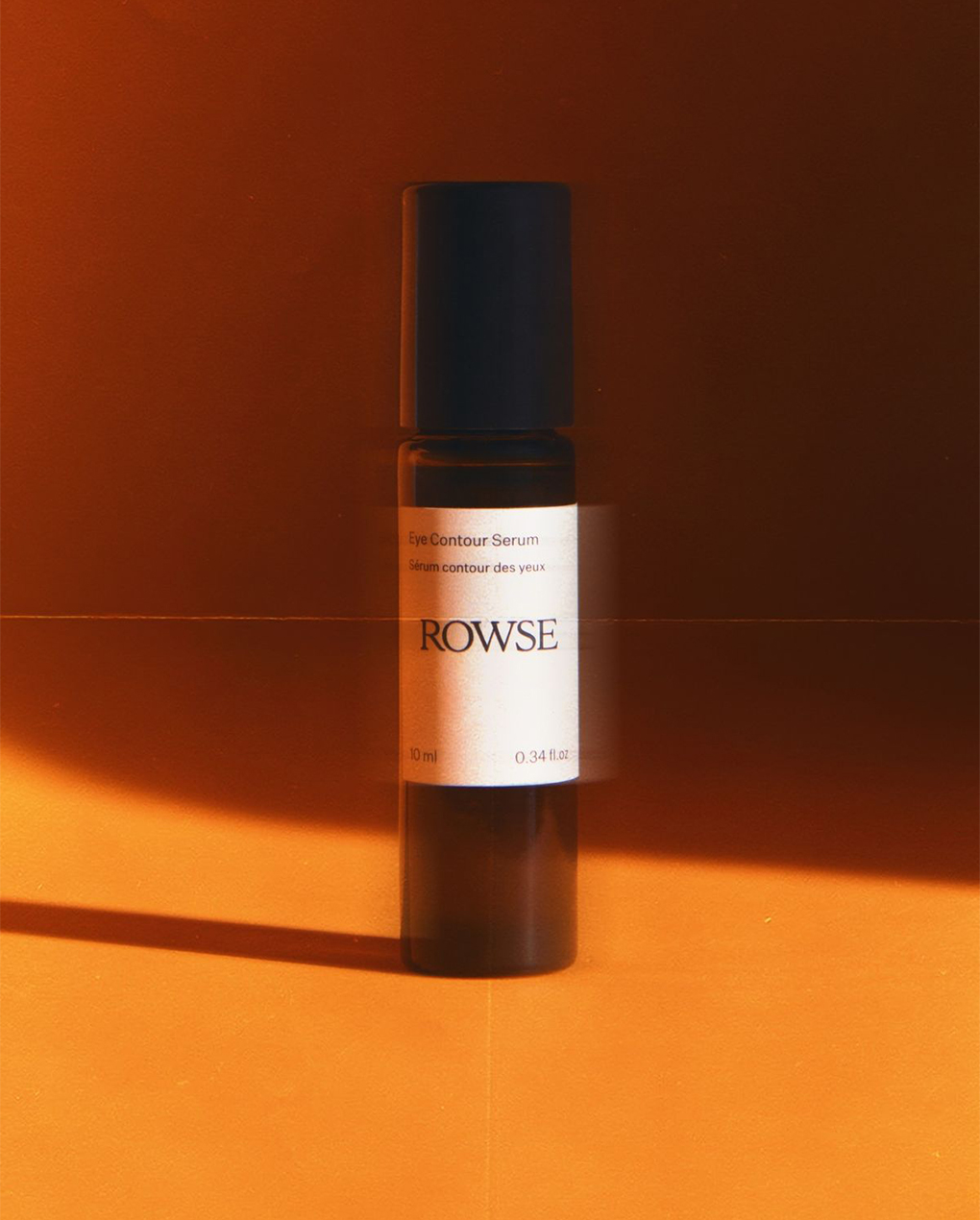
Source: ROWSE Beauty Instagram
The same goes for visual language. Quick cuts and sharp contrasts capture the moment, but light and shadow held in a long take with the aperture open create depth in memory. When light moves slowly, we see ‘time’ within it. That’s why good design always looks a little slow. Within it, you feel space, breath, silence.
Silence is never emptiness. It’s where emotion accumulates. If the language of speed leaves stimulation, the language of slowness leaves resonance.
4 The Ethics of Slowness: Living at the Speed of Emotion in an Age of Information
Technology has shortened our time, but the speed of emotion remains as it always was. The human heart is still understood through slow language and remembered through slow gazes.
K-Beauty's evolution seems headed this way as well. Beyond instant effects: skin that glows more as time accumulates, beauty that deepens as emotion layers. This appears to be not simply a marketing orientation but a personal respect for time.
Hartmut Rosa speaks of the phenomenon of Social Acceleration this way:
Run, run always faster, not to reach an objective, but to maintain the status quo, to simply remain in the same place.
- Hartmut Rosa
This means we must run endlessly faster, not to reach a goal but to maintain the status quo, to stay in the same place. It critically reveals that, despite constant effort and acceleration, modern people merely retain their current position without real progress or change.
Slowness means more than just the pace of life—it means the restoration of emotion, the recovery of humanity. If speed is a function, slowness is being.
4 Slowness Is Ultimately Another Name for Depth
Beauty is not fast. It always blooms within the grain of dwelling. Technology has made our lives efficient, but efficiency alone cannot persuade the heart.
The scenes we remember are always slow. The scent of flowers along a spring roadside. The trajectory of sunlight following fog and shadow wrapped in layers as night deepens. What truly moves the heart has always approached slowly.
“Speed leaves information, but slowness leaves emotion.”
That’s why true beauty always arrives late. Slowness isn’t obsolescence—it’s a strategy of depth where time accumulates. It’s the art of the heart reshaping time, the grain that quietly holds us still, even when the world moves too fast.
And so when we pause for a moment, breathe, and gather ourselves, beauty quietly comes to sit beside us.
Epilogue
The Space Slowness Leaves Behind
There is light that blooms only through the passage of time.
Slowness is the act of making space for that light to dwell.
The world still rushes on,
but I am learning, little by little, how to slow down within it.
Standing still, listening to the grain of the wind,
watching a single late-blooming flower—
perhaps the passage of time means
something is growing.
Beauty has always found me this way.
Sometimes, through things that don’t hurry.
Sometimes, through things that ripen slowly.
Sometimes, through things that approach at a pace my heart can follow.
And so I have come to believe
that slowness is not falling behind—
it’s the breath of all living things.
And that this breath, this single sigh, breathing life into us,
will someday carry me to deeper places.
* References
- Martin Heidegger, Building, Dwelling, Thinking (Harper & Row, 1971)
- Gaston Bachelard, The Poetics of Space (1957)
- Hartmut Rosa, Social Acceleration : A New Theory of Modernity (Columbia University Press, 2013)
- Norton, M.I & Gino, F. “ Rituals Enhance Consumpiton” (PNAS, 2013)
- Alain de Botton, The Art of Travel (Vintage, 2002)
- loannou, A.et al. “Mindfulness and Technostress in the Workplace,” Frontiers in Psychology (2023)
 |

Juyoung Reu |
|
|
Amorepacific
|
|
-
Like
0 -
Recommend
0 -
Thumbs up
0 -
Supporting
0 -
Want follow-up article
0



